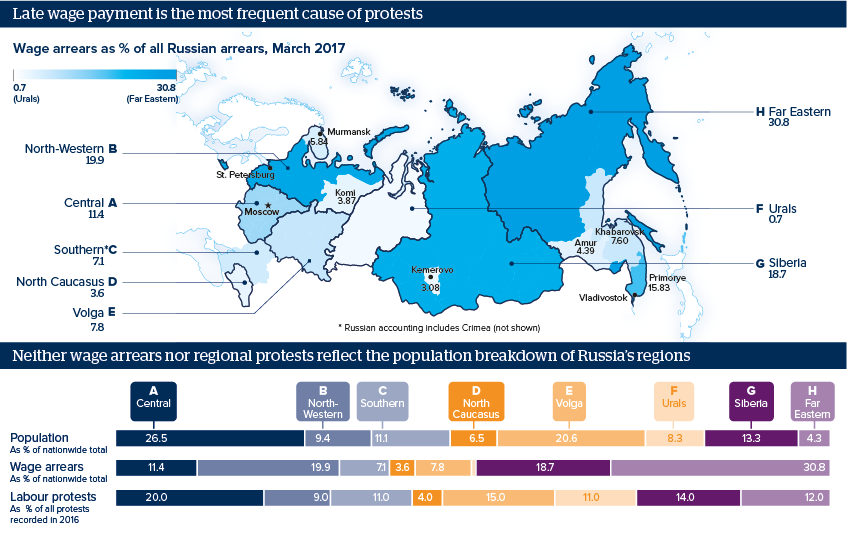New-style Russian protests will need careful handling
President Vladimir Putin can ignore most local labour disputes but nationwide movements are less easy to crush
Source: Goskomstat; Centre for Social and Labour Rights
Outlook
The scattered nature of labour disputes means this kind of protest is largely manageable at regional level. Two nationwide movements present a greater threat to government ahead of the 2018 presidential election: revived protests by lorry drivers over road tax continue across much of Russia, while March 26 demonstrations against corruption (and against the prime minister) took place in numerous cities away from Moscow and St Petersburg.
Non-payment of wages is by far the most common cause of ‘conventional’ protests, accounting for 54% of actions recorded across Russia last year. The Far Eastern region including Vladivostok is particularly bad. Another port, Murmansk, also shows high wage arrears.
Impacts
- Opposition leader Alexey Navalny will try to forge anti-graft sentiment into an anti-Kremlin political force around Russia Day, June 12.
- The vast geographical spread of the road tax protests shows how universal concerns can unite disparate regions.
- A younger generation of protesters will be less impressed by Putin’s promises of stability at all costs.
- The truck drivers seem implacable as well as organised; they flatly turned down a government compromise offer.
See also
- Poverty cannot be reduced before Russian election - Jun 29, 2017
- Russian protests challenge Kremlin's election strategy - Apr 4, 2017
- More graphic analysis
